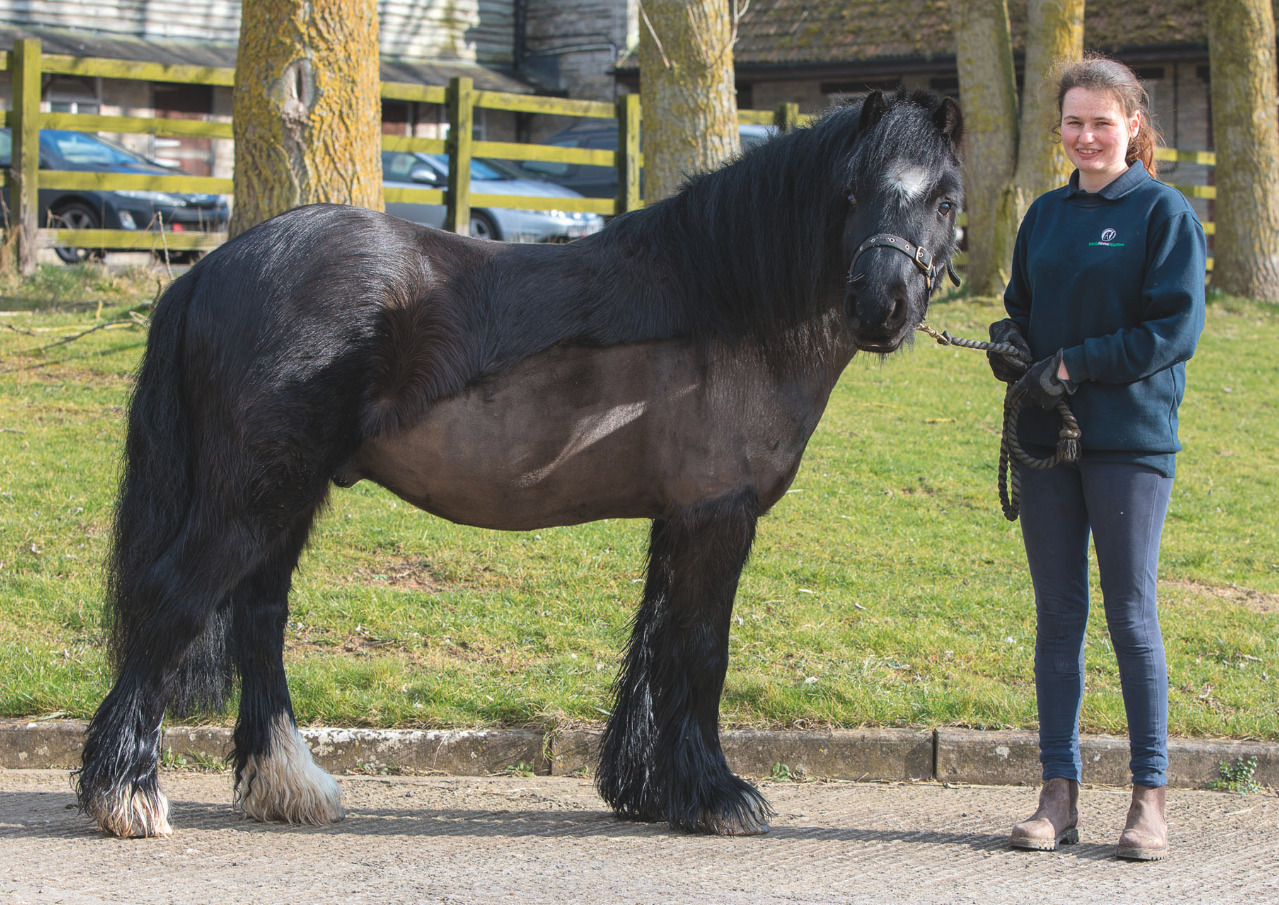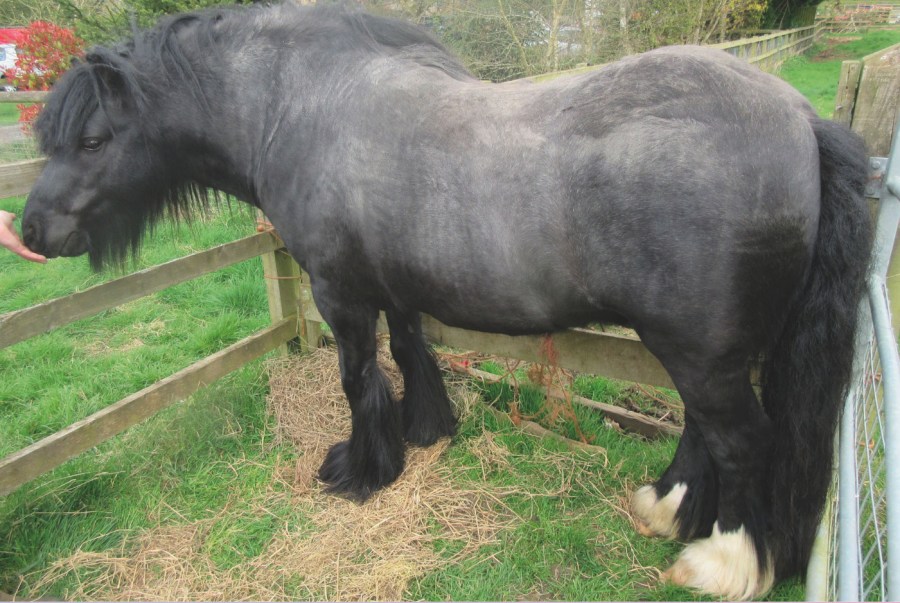A pony rescued after being abandoned and left to gorge himself on open grassland has undergone a huge transformation after losing nearly 14 stone in weight.
When World Horse Welfare field officer Chris Shaw discovered 13.1hh Fell pony Dave, affectionately known as Thunder, in April 2017, he was grossly overweight and suffering from laminitis.

Dave’s weight loss has massively improved his quality of life. Photos: World Horse Welfare
Dave was taken into the care of World Horse Welfare’s Glenda Spooner Farm Rescue and Rehoming Centre in Somerset. He was immediately assessed by a vet, who described him as being the most overweight pony she had ever seen.
Thanks to a very carefully managed diet and weight loss programme to help him safely shift the huge amount of excess weight he was carrying, Dave lost almost 90 kilograms — more than 14 stone — to reach a healthy weight. He has since been rehomed as a happy, healthy pony.
It isn’t always easy to rehabilitate a horse or pony who is overweight, however. In fact, warns World Horse Welfare field officer Penny Baker, it is easier to rehabilitate an underweight equine, providing they have no other underlying health problems, compared to an obese one.
This is because obesity often has long-lasting effects on a horse’s health, and can trigger potentially-fatal diseases like laminitis and equine metabolic syndrome (EMS), as well lameness. Yet far more underweight horses are reported to equine charities like World Horse Welfare compared to overweight ones.
Action you can take
Penny adds that there are things every horse owner can start doing to help fight the equine obesity epidemic and work towards being #FitnotFat:
1 Get on the scales
Many feed companies are happy to visit yards with a weighbridge. Recently a feed company was public in saying it will consider all numbers of participants, so don’t be put off if you don’t have a yard of 10 or so horses. Make it a yard day or group activity. It takes courage to admit and accept that you may need to change something about your horse and its management, so doing it all as a team could make it easier — not to mention informative.
2 Measure up
Seek out tools that will monitor your horse’s weight. Welfare charities have heaps of information with management tool ideas about how to monitor and control weight. We have had to deal with hundreds of overweight ponies in the past, so we have been there too and we understand how difficult it can be to manage.
3 Learn to fat score
This isn’t just for your horse but for other people’s too. Pairing up with others and fat scoring on other horses is not only great practise but it also helps to get an objective opinion on your own horse. Seeing them every day, it can be difficult to see any weight gain and the last thing you want is a biased angle. I think a lot of people could probably identify a fat score of 4.5 out of 5, but could you recognise a 3.5 out of 5?
4 Be open to discussing weight
The most productive thing you can do as a horse owner is be open to the idea your horse may need to lose weight if a professional raises the subject.
As difficult as it will be to hear that, it will be just as hard for that professional to raise that subject with you. It won’t be meant as a criticism but as a starting point to see where you can get some extra help, tips and tools.









